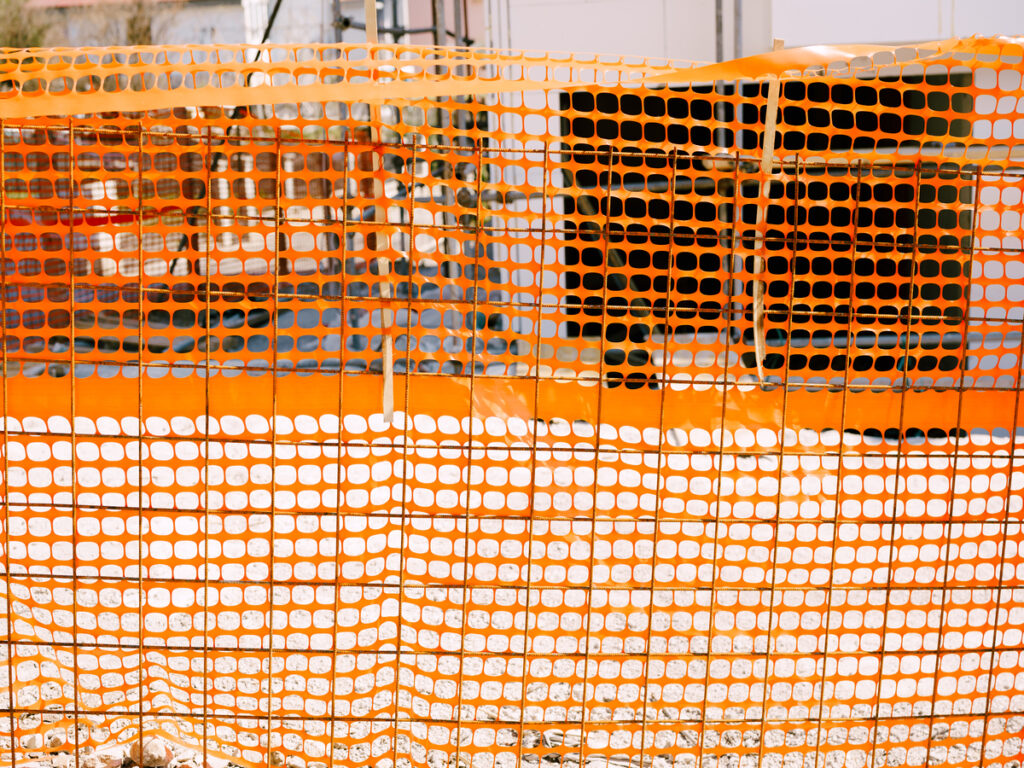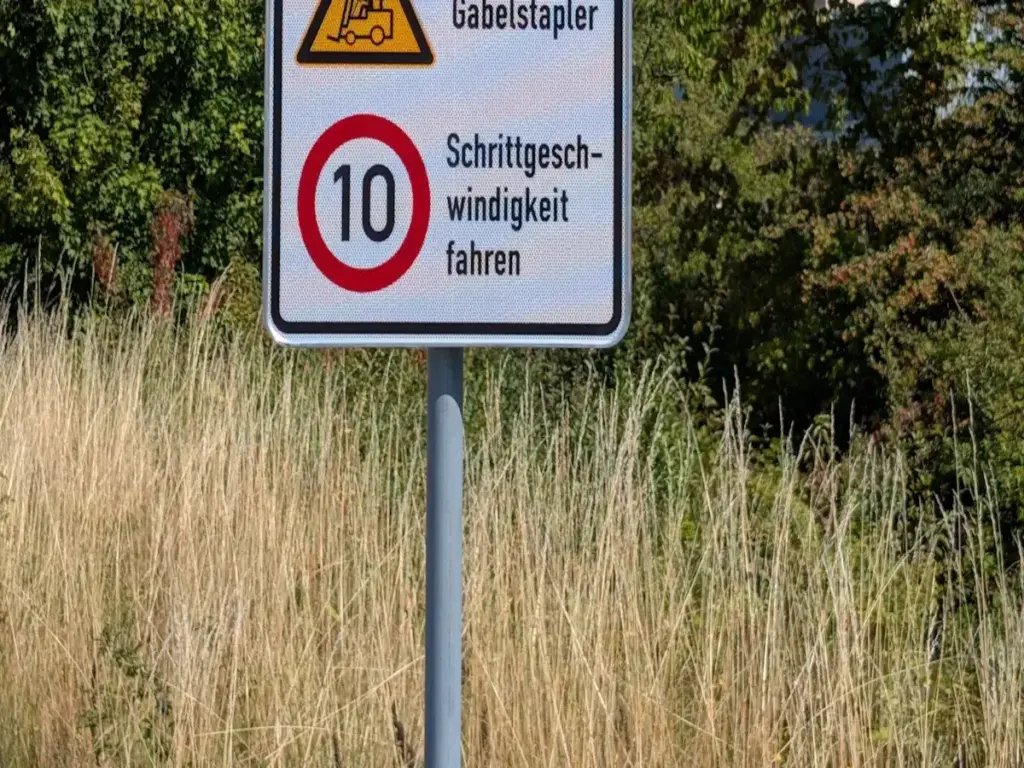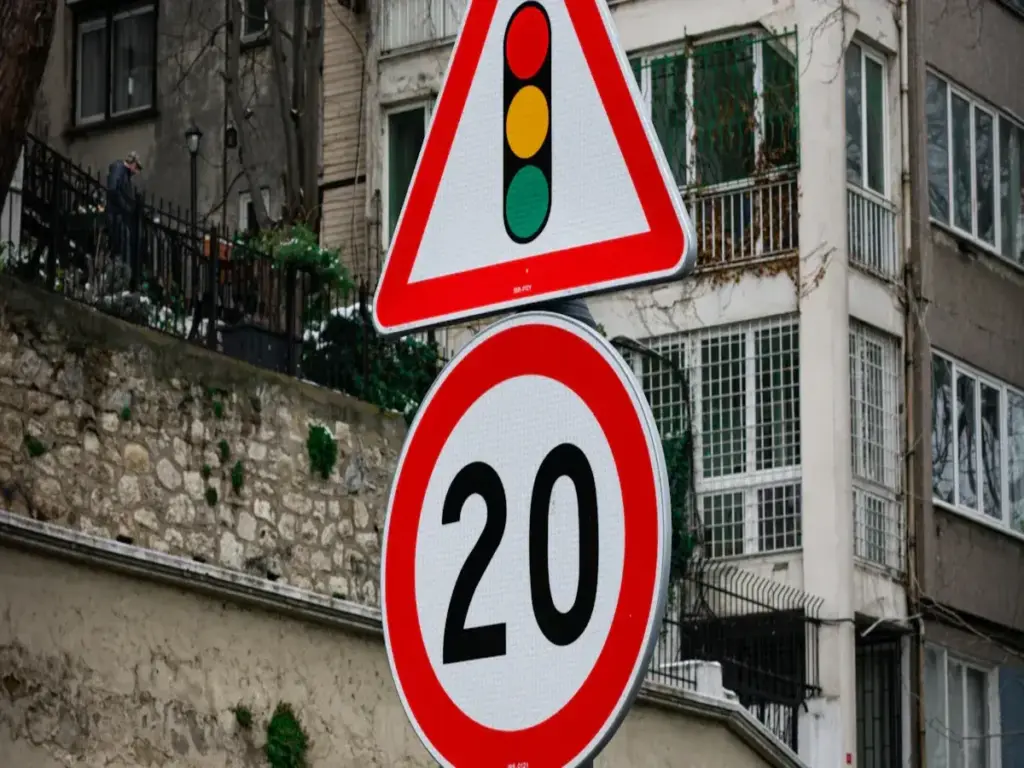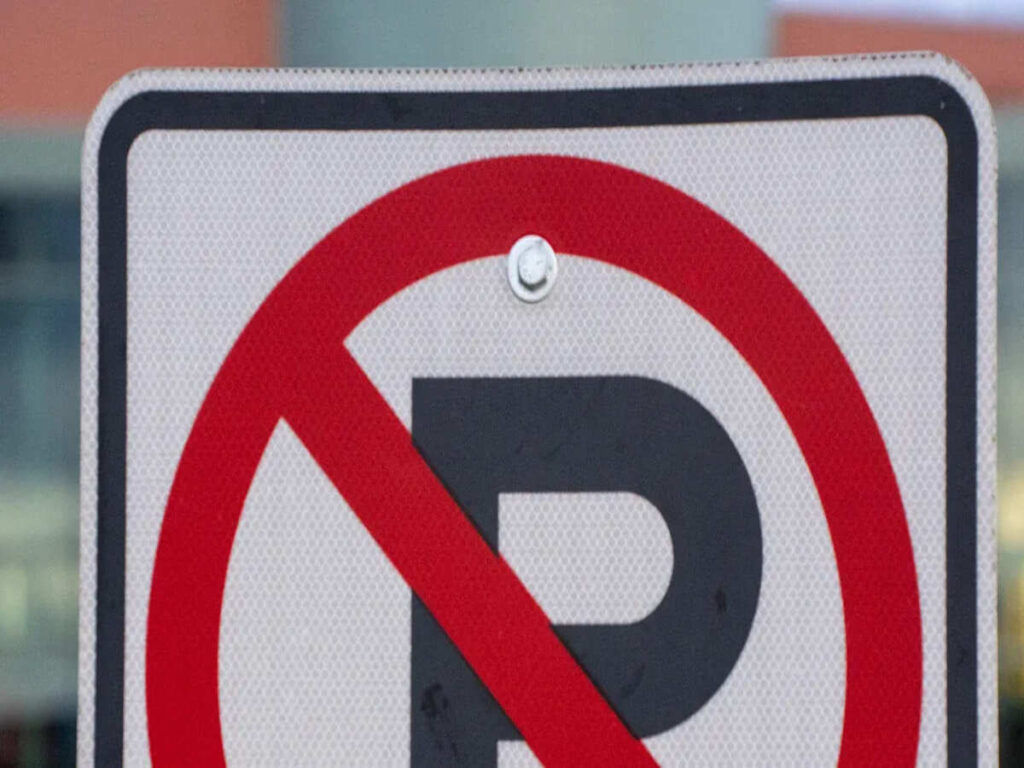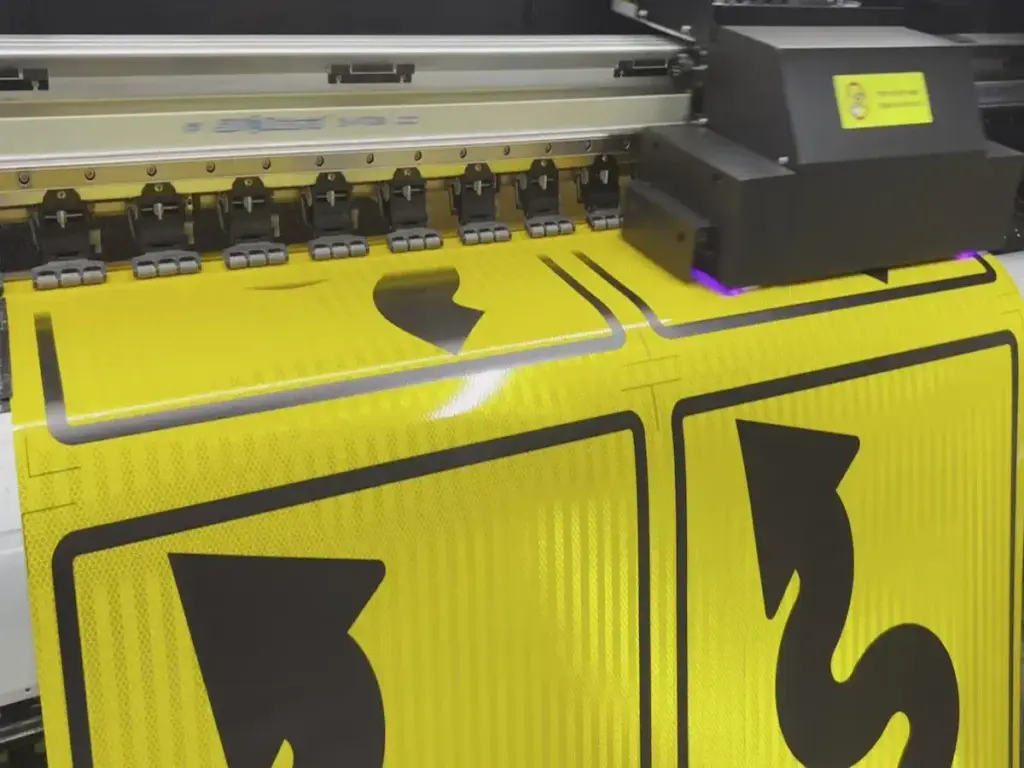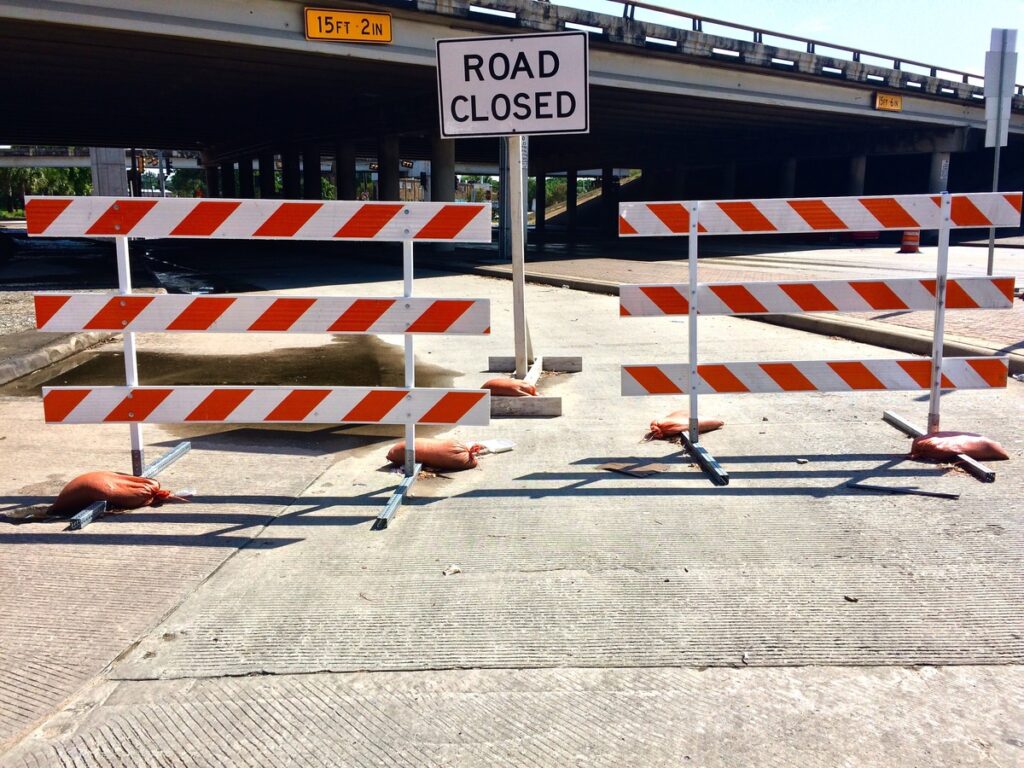
High-traffic zones can be very dangerous for drivers, people walking, and workers. In 2023, Australia had 1,266 deaths on the road. New South Wales had the most deaths. Speeding is still the main reason for crashes. This is worse in construction zones.
Clear construction traffic signs and good traffic barricades help keep people safe. Signs warn people using the road. Barricades give real protection. Using both together, and following the rules, keeps roads safer in busy places. This also helps workers who look after these areas.
OPTRAFFIC offers a wide range of reliable traffic signs and road barricades designed to improve safety in high-traffic and construction zones. Our products meet the latest safety standards and are built to withstand challenging conditions. Explore our selection today to help keep roads and workers safe.
Signs in High-Traffic Zones
Information and Warnings
Signs are very important in busy areas, especially where there is construction. Construction traffic signs give important information to help everyone stay safe. These traffic signs can be regulatory, warning, or guide signs. Regulatory signs, like Stop, Speed Limit, and No Parking, tell drivers the rules. Warning signs, such as Sharp Turn, Pedestrian Crossing, and Road Work Ahead, warn about dangers. In construction zones, these warnings matter even more. Signs like Road Work Ahead and Detour Signs let drivers know about changes or obstacles on the road.
Warning signs are usually yellow with black symbols and shaped like diamonds. This helps people notice them quickly. They are often found in work zones, construction sites, and places with lots of people walking. Drivers see signs like Slippery When Wet, Traffic Signal Ahead, or Sharp Curve. These signs remind drivers to be careful and help stop accidents. Construction traffic signs are put in the right places so drivers have time to slow down or turn. This way, everyone gets a warning and can be careful.
Guidance for Road Users
Signs help a lot in busy or tricky places, especially in construction and work zones. Construction traffic signs show cars how to go around dangers, tell about closed lanes, and show safe ways through road work. Signs like Exit Signs, Street Name Signs, and speed advice signs help drivers choose quickly. In busy areas, temporary signs and electronic boards give updates right away, which is helpful when things change fast.
- Signs are put up more often at tricky crossings and where there is lots of building work.
- Temporary construction traffic signs use shiny materials so people can see them at night or in bad weather.
- Smart traffic systems and GPS technology help put signs in the best places and change messages when needed.
- Cities with lots of building work need signs to help both drivers and people walking stay safe.
Construction traffic signs in work zones stop confusion and keep cars moving well. Good sign placement and clear messages help drivers follow detours, stay away from dangers, and drive safely. Road work projects need these signs to protect workers and make sure everyone gets where they are going safely.
Traffic Barricades and Their Role
Physical Protection
Traffic barricades are very important in construction zones. These barriers make a strong wall between cars and workers. Road safety barriers take the hit if a car crashes. They stop cars from going into dangerous work areas. In busy places, temporary barriers keep workers and machines safe from cars. Road safety barriers also help people walking near building sites. Construction teams pick different barriers, like water-filled, concrete, or steel, based on what is needed. Temporary barriers are easy to move when the work area changes. Road safety barriers help stop bad injuries by blocking cars from unsafe spots. Construction bosses trust these barriers to keep everyone safe. Strong road safety barriers make people feel the site is safe.
Tip: Construction teams should check road safety barriers often. This makes sure they stay strong and work well, especially in temporary work areas.
Work Zone Delineation
Traffic barricades show where each work zone starts and ends. Clear lines help cars go safely around building work. Road safety barriers tell drivers where not to drive. This stops confusion and keeps cars on the right path. Construction zones often have fewer lanes, new signs, and big machines. These things make driving harder and can cause more crashes. Using temporary barriers and road safety barriers the right way can help stop this.
The table below shows how work zone boundaries affect crash numbers:
| Aspect | Evidence Summary | Impact on Accident Rates |
|---|---|---|
| Work Zone Delineation | Traffic barricades and other control devices physically mark work zones and guide traffic flow. | These conditions increase crash risk. |
| Work Zone Length | Longer work zones are linked to higher crash rates. | Crash rates rise as work zone length increases. |
| Work Zone Duration | Longer duration may increase crashes, but evidence is less robust. | Duration can affect crash frequency. |
| Work Zone Configurations | Proper signage and barrier placement influence driver behaviour and crash occurrence. | Good delineation reduces crash risk. |
| Police Presence and Speed Control | Police and speed control measures reduce vehicle speeds and accident rates. | Enforcement lowers crash risk. |
Studies show that using road safety barriers and temporary barricades the right way helps guide cars and stops confusion. When there are clear signs, good barriers, and police, there are fewer crashes in work zones. Construction bosses should always plan where to put barriers to keep workers and drivers as safe as possible.
Safety Through Synergy
Layered Safety Approach
Staying safe in busy areas needs more than one thing. Construction teams use many safety steps to protect everyone. They mix construction traffic signs and barriers for strong safety. Signs give warnings and tell people what to do. Barriers keep people safe by blocking danger. When used together, these tools make a full safety plan.
Construction traffic signs are the first warning for drivers. They tell drivers about changes ahead on the road. Warnings like “Road Work Ahead” or “Detour” help drivers get ready. These signs are put up before the work zone starts. Drivers see them early and can slow down or move over. Signs also show the right speed and safe ways to drive.
Barriers add more safety for everyone. Road safety barriers and traffic barricades block off risky places. They stop cars from going into work zones by mistake. Construction teams use different kinds of barriers. Some barriers are easy to move and used for short jobs. Others, like concrete or steel, stay for longer work. Each barrier has its own job. Moveable barriers help when the work area changes a lot. Strong barriers keep workers and machines safe from crashes.
Note: Using many safety steps stops confusion. Drivers see clear signs and strong barriers. This mix lowers the chance of accidents in busy work zones.
The Safe System approach helps this plan work well. It tries to stop mistakes from causing bad crashes. The system knows people can make errors. By using both construction traffic signs and barriers, the Safe System keeps everyone safer. Drivers, workers, and people walking all get help from this plan.
Accident Prevention
Stopping accidents in work zones needs both construction traffic signs and barriers. When both are used, safety gets better for everyone. Signs warn drivers about changes ahead. Barriers make sure drivers follow the warnings by blocking unsafe ways.
Think about a highway building job. Construction traffic signs are put up far before the work zone. These signs tell drivers to slow down and get ready for lane changes. As cars get closer, more signs show detours. Temporary barriers are put along the work zone edge. These barriers keep cars away from workers and machines. Road safety barriers are put in key spots to stop cars from going into closed lanes.
In cities, teams use both signs and barriers together. Construction traffic signs guide cars and people walking. Barriers show safe paths and keep people away from machines. Moveable barriers are used when the work area changes a lot. This helps keep everyone safe, even when the job changes every day.
Signs and barriers work well together at night too. Reflective construction traffic signs shine when headlights hit them. Barriers with lights or bright colours are easy to see in the dark. Drivers notice both signs and barriers, even when it is dark. This helps stop confusion and keeps the work zone safe all the time.
The Safe System approach likes this teamwork. It knows that one thing alone cannot stop all accidents. By using construction traffic signs, traffic barricades, and road safety barriers, teams make work zones safer. This keeps workers, drivers, and people walking safe from harm. It also helps cars move smoothly through work zones.
Construction teams in Australia use this plan to meet road safety rules. They pick the right mix of construction traffic signs and barriers for each job. Teams check often to make sure signs and barriers are in place and working. This focus on safety saves lives and stops injuries in work zones.
Best Practices for Visibility and Placement
Signage Standards
Australian Standards (AS 1742) give rules for signs in busy areas. These rules say how big, what colour, and what shape signs should be. Signs must use special designs so they all look the same. Councils and road managers put signs where drivers can see them well. They must not hide signs behind trees or parked cars. Signs need to use shiny materials, like those in AS/NZS 1906, so people see them at night or when it rains. Stop signs must use Class 1 or 1W shiny sheets to stand out. Signs must be strong and last in tough Australian weather. People check signs often to make sure they are clear and legal. Councils should learn about new AS 1742 rules and teach workers to keep signs safe.
Tip: Always look at where signs are put so drivers have time to see and react.
Barricade Positioning
Putting barriers in the right place keeps workers safe and helps cars move. Teams must know why each barrier is needed, like moving cars, closing lanes, or making paths for people walking. On highways, barriers should be 20-30 feet apart. In cities or building sites, 10-15 feet is better. For people walking, 5-10 feet works best. Barriers must always be easy to see, so teams use shiny collars and change things if the weather is bad. Heavy bases or more barriers stop them from falling in strong wind. Using barriers with cones, signs, and message boards makes safe spaces for everyone. Following local rules helps put barriers in the right place and keeps people safe.
| Environment | Barrier Spacing | Additional Measures |
|---|---|---|
| Highways | 20-30 feet | Reflective collars, cones |
| Urban/Construction | 10-15 feet | Message boards, signage |
| Pedestrian Walkways | 5-10 feet | Weighted bases, extra cones |
Enhancing Visibility
It is very important to see signs and barriers, especially at night or in bad weather. Shiny materials, like prism retro-reflective sheets, bounce car lights back to drivers. This makes signs and barriers easy to see from far away. Using micro-prismatic lens sheets helps people see up to 600 feet away. Flashing LED signs and bright words help people see at night. Teams can use fast-flashing lights and crosswalk lights to show where people walk. Cleaning signs and barriers often takes away dirt that blocks shiny parts. UV and anti-rust coatings keep signs and barriers safe from weather. Checking signs and barriers often helps find problems early and keeps everything working well.
Note: Safety checks and teamwork help make sure signs and barriers stay easy to see, strong, and follow the rules.
Compliance and Regulation
Australian Standards
Australian Standards have strict rules for traffic signs and barriers in busy areas. AS 1742 tells how to plan, design, and put up each barrier and sign. This rule makes sure barriers are safe for everyone. Signs must be the right size, shape, and brightness. Reflective materials must meet AS/NZS 1906.1 so signs can be seen at night. Each sign needs the right code and reflectivity level. Sometimes, councils want bigger or brighter signs in busy places. The Manual of Uniform Traffic Control Devices gives more advice for each state.
AS 1742.3-2009 explains how to use barriers in building and repair zones. It tells where to put barriers, how to check them, and when to take them away. The rule says workers near barriers must wear bright clothes. Every barrier should protect workers and help people use the road safely. The rule covers both still and moving work sites, emergency jobs, and how to control people walking. Following these rules helps teams lower risk scores and keep everyone safe.
Here is a table that compares Australian and world rules:
| Feature | Australian Standard (AS/NZS 1906.1) | International Standard (ASTM D4956 Type IV) |
|---|---|---|
| Reflectivity | 400–550 cd/lx/m² | 270–330 cd/lx/m² |
| Durability | 10–12 years | 7–10 years |
| Best Use | Critical signage, tunnels, barrier zones | General traffic signs, some barrier use |
Australian rules want signs and barriers to be brighter and last longer. This focus on quality helps keep people safer and lowers risk scores.
Enforcement and Audits
Authorities in Australia use many ways to check if barriers and signs follow the rules. They do roadside checks, look at papers, and use digital tools to keep standards high. Auditors check work diaries, weighbridge records, and electronic logs. They make sure each barrier is in the right spot and follows all safety rules. State agencies look at different things. For example, New South Wales checks for tired drivers and heavy loads. Victoria uses lessons and self-checks. Queensland checks weight limits and permits. Tasmania and ACT look at digital records and Chain of Responsibility audits.
Federal agencies work with states to make sure all traffic barriers and signs follow the rules. They use fines, training, and certificates to keep standards high. The Department of Infrastructure and Austroads lead these checks. Regular checks and inspections help lower risk scores and keep people safe. Teaching the public is important too. Schools, parents, and groups learn why barriers and signs matter. This shared learning helps everyone follow the rules and keeps busy roads safe.
Tip: Regular checks and teaching people help keep high safety standards for barriers and signs in busy places.
Real-World Applications
Urban Roadworks
Australian cities use careful traffic plans to keep people safe during building work. These plans show where every barrier, sign, and pedestrian detour should go. Trained traffic controllers put up barriers and signs to guide cars and people around work zones. Closing two lanes with clear detours and signs is now common. City councils and builders use these steps to stop accidents and cut down on complaints. Barriers keep building areas apart from moving cars, while signs help both drivers and people walking. This way, everyone follows safety laws and the work goes smoothly. Teams check and update things often to keep safety high during the whole job.
Note: Good traffic management in city roadworks needs the right use of barriers and signs to keep workers and people walking safe.
Highway Projects
Big highway jobs in Australia have become safer by using traffic signs and barriers in smart ways.
- Warning signs inside tunnels help drivers see dangers when it is hard to see.
- Speed limit signs and checks help stop crashes from speeding.
- Rumble strips and markers show drivers where to go and stop risky moves.
- Crash cushions at important spots take the hit and make crashes less bad.
- Better road lines and barrier spots help drivers see and know what to expect.
- Road barriers with extra skirting keep motorcyclists and others safer.
- Keeping emergency lanes wide and clear stops wrong use and keeps things safe.
Barriers, crash cushions, and portable signals all work together to keep drivers and workers safe. These tools guide traffic, slow cars down, and make roads safer for everyone.
Event Traffic Management
Big events need special traffic plans to keep cars and people safe. Temporary traffic signs show road closures, detours, and parking spots. Barriers and cones make safe paths and block off areas people should not go. Moveable lane dividers help change traffic flow when needed, especially after events. Watching traffic in real time lets teams move barriers quickly if there are traffic jams. Reflective signs and barriers help people see better when it is dark. Crowd control barriers keep people safe by keeping them away from cars. Light barriers are easy to put up and take down, so they are good for short events. Working with local councils and emergency teams makes sure all safety rules are followed and everyone stays safe.
Traffic planners and construction managers use signs and barricades to make busy areas safer. Signs give warnings, directions, and updates to everyone. Barricades protect people by blocking off dangerous spots. Using both signs and barricades helps keep everyone safe from many dangers.
- Signs need to change when the site changes or when there is new technology.
- Checking signs and barricades often and working together makes them work better.
- Signs and barricades must follow strict rules, like being strong and easy to see, to keep people safe.
- In the future, smarter signs and systems will help automated vehicles stay safe.
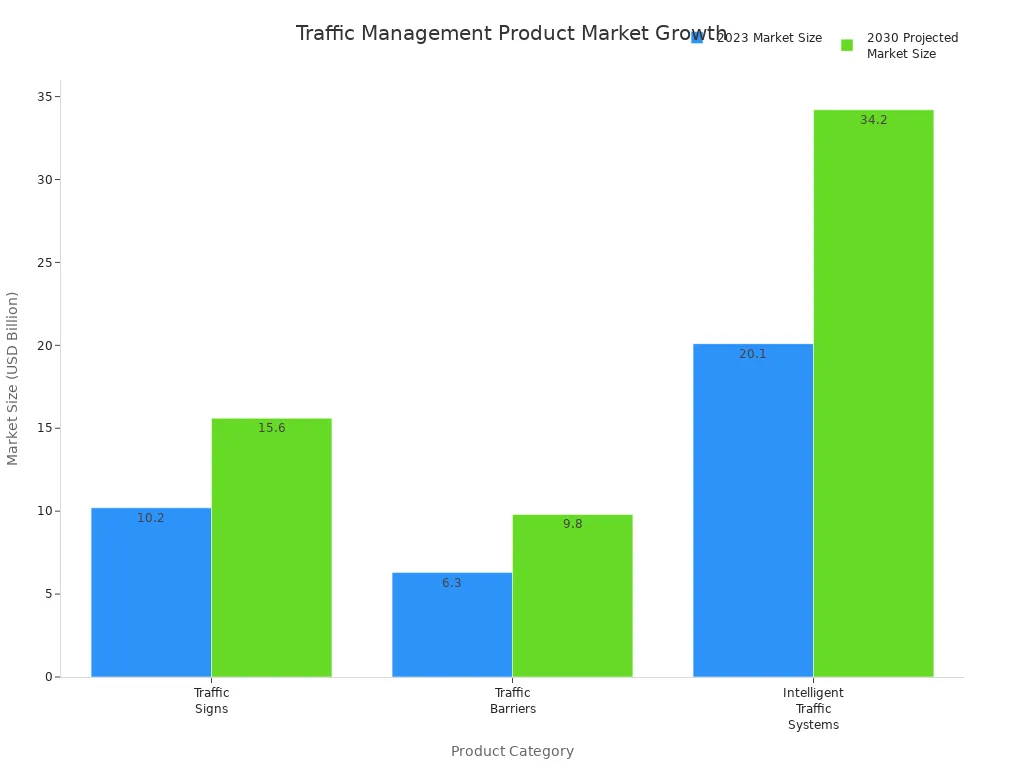
Making traffic plans better all the time will help signs work well and keep safety important.
FAQ
What is the main purpose of traffic barricades in a work zone?
Traffic barricades make a strong wall between cars and workers. They stop cars from going into unsafe places. Barricades also help cars move safely around building areas. They keep people walking safe from danger.
How do construction traffic signs improve road safety?
Construction traffic signs give clear warnings and directions. They tell drivers about changes, like road work or detours. Good sign placement helps drivers see them better. This lowers accidents in busy work zones.
Why is visibility important for signage and barriers?
Visibility helps drivers and people walking see warnings early. Bright colours, shiny materials, and lights make signs easy to spot. High visibility lowers the chance of accidents, especially at night or in bad weather.
What are best practices for sign placement in road construction?
Teams should put signs where drivers can see them early. Signs must not hide behind trees or other things. Good placement follows safety checks and Australian rules. This helps drivers react quickly and keeps everyone safe.
How does traffic management protect pedestrians during road construction?
Traffic management uses safe paths, temporary barriers, and clear signs. These steps keep people walking away from cars. They lower danger and help everyone stay safe in building areas.

